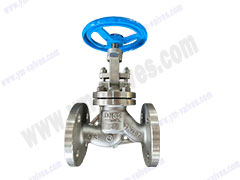-
【Valve Knowledge】 The Role of Control Valves in Pipelines
-
Control valves are core control components in pipeline systems. Their core function is to precisely regulate key parameters of the medium (liquid, gas, steam, etc.) within the pipeline by changing the flow area between the valve core and seat, thus meeting the process requirements and stable operation needs of industrial production, energy supply, water treatment, and other scenarios. Their specific functions can be broken down into the following 6 core dimensions:
1. Precise Control of Medium Flow
This is the most basic and core function of a control valve. By receiving signals from the controller (such as current and voltage), the control valve can dynamically change the valve core opening (continuous adjustment from fully closed to fully open), thereby:
Controlling Flow Rate: For example, in chemical reactions, precisely regulating the feed flow rate ensures the reaction proceeds proportionally, avoiding material waste or incomplete reaction;
Stabilizing Flow Fluctuations: When changes in pipeline pressure, temperature, or other parameters cause abnormal flow, the control valve can correct the opening in real time, maintaining the flow rate at the set value (e.g., in heating pipelines, adjusting the hot water flow rate according to the outdoor temperature to ensure a constant indoor temperature).
2. Regulating Pipeline System Pressure
Regulating valves control pipeline pressure through throttling (reducing flow area and causing pressure loss) or overflow. There are two core scenarios:
Pressure Reduction Control:When upstream pressure is too high (e.g., in high-pressure steam pipelines), and downstream equipment or pipelines cannot withstand it, the regulating valve can reduce the pressure to a safe range (e.g., reducing 10MPa steam to 2MPa for use in heat exchangers).
Pressure Stabilization Control:Maintaining stable pressure at a specific point in the pipeline. For example, in a water supply system, regulating valves control the network pressure to prevent insufficient water pressure for high-rise users or excessively high water pressure for low-rise users, which could lead to pipe bursts.
3. Controlling Medium Temperature
Temperature regulation is typically achieved through "indirect flow control": In industrial settings, temperature depends on the heat exchange of the medium (e.g., heat exchangers, boilers). Control valves adjust the flow rate of the heating medium (steam, hot water) or the cooling medium (chilled water), thereby altering the heat exchange efficiency and controlling the temperature of the target medium.
For example, in the sterilization process of food processing, a control valve regulates the steam flow rate to stabilize the temperature of the heated material at 121℃, ensuring sterilization effectiveness without compromising material quality.
4. Maintaining Container/Tank Levels
In systems involving liquid storage or reactions (such as storage tanks and reactors), regulating valves maintain liquid levels within a safe and reasonable range by controlling the "feed flow rate" or "discharge flow rate": Over-level protection: When the tank level approaches the upper limit, the regulating valve can reduce the feed flow rate or increase the discharge flow rate to prevent liquid overflow (e.g., level control in petrochemical storage tanks to prevent crude oil leakage); Under-level protection: When the level approaches the lower limit, the regulating valve can increase the feed flow rate to prevent the pump from running dry (e.g., boiler water level control to prevent boiler dry burning and explosion due to excessively low water levels).
5. Ensuring Stable Process Parameters and Improving Product Quality
In industrial production, product quality (such as purity, concentration, and particle size) is highly dependent on the stability of parameters such as the flow rate, pressure, and temperature of the medium. As the "execution terminal" of an automatic control system, a regulating valve can be linked with sensors (such as flow meters, pressure transmitters, and thermometers) and controllers (such as PLCs and DCSs) to form a closed-loop control system.
For example, in the pharmaceutical industry's drug preparation process, a regulating valve precisely controls the feed flow ratio of solvent and solute, ensuring that the drug concentration error is less than ±0.5%, meeting pharmaceutical production standards.
6. System Safety Protection and Emergency Shutdown
Some control valves equipped with "quick-closing" or "fail-safe" functions (such as emergency shut-off valves, fault-closed/fail-open control valves) can provide protection in case of system failure:
Emergency Shutdown: When pipelines experience dangerous conditions such as leakage, overpressure, or overtemperature, the control valve can fully close within milliseconds, cutting off the flow of media (e.g., emergency shut-off valves in gas pipelines quickly close upon detecting a leak to prevent explosion);
Fail-Safe: In the event of power failure or signal interruption, the control valve can automatically return to a preset safe position (e.g., "fail-closed" type used in pipelines carrying toxic media automatically closes after power failure to prevent media leakage; "fail-open" type used in boiler feedwater pipelines automatically opens after power failure to prevent boiler water shortage).




.jpg)
.jpg)
.jpg)